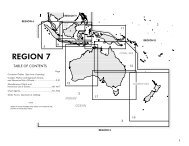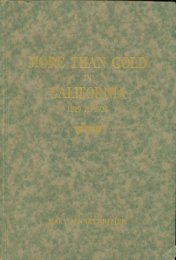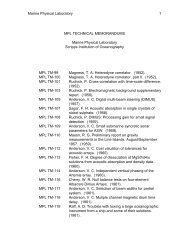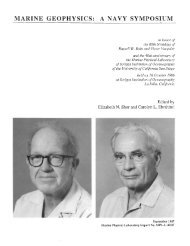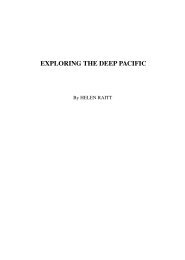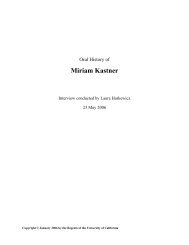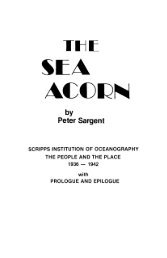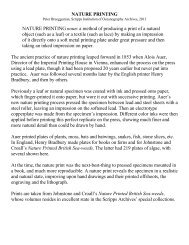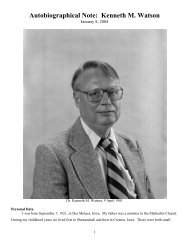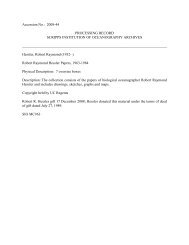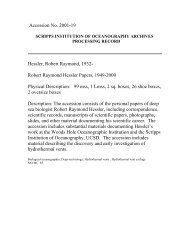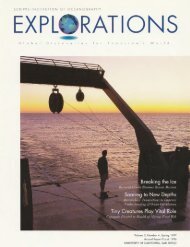Bill and Bob, Where Did You Come From (LaFond, Gehring, Imes ...
Bill and Bob, Where Did You Come From (LaFond, Gehring, Imes ...
Bill and Bob, Where Did You Come From (LaFond, Gehring, Imes ...
Create successful ePaper yourself
Turn your PDF publications into a flip-book with our unique Google optimized e-Paper software.
Dr. Denis Fox, a distinguished biologist, joined the<br />
staff from Stanford in 1931. His speciality was carotenoid<br />
pigments in marine organisms, a number of<br />
which exhibited the orange coloration indicative of the<br />
long chain formula of carotenoid pigments. When I<br />
took a graduate course from Dr. Fox my project was<br />
to determine the effect of mussels on sedimentation. I<br />
suspended 2 large bell jars adjacent to each other<br />
on the end of the pier. One contained mussels <strong>and</strong><br />
the other contained rocks of equal size. The sediment<br />
collected in the bottom of each jar was analyzed for<br />
grain size <strong>and</strong> organic matter. The results were impressive<br />
enough to receive a good grade in marine biology.<br />
Graham Wallace Marks, known as Wally, joined<br />
the staff about 1932 <strong>and</strong> worked as chemical physicist<br />
in Dr. Fox's group. In 1935 he married Alice Holl<strong>and</strong>,<br />
the roommate of Katherine's. Shortly afterwards he<br />
joined the U.S. Bureau of Mines in Salt Lake City,<br />
<strong>and</strong> several years later joined me in the Marine<br />
Environment Division at the Navy Electronics Laboratory.<br />
He was a quiet, studious <strong>and</strong> very capable<br />
scientist.<br />
Earl Myers worked on his thesis under Dr. Fox in<br />
the biology part of the Institute. Among other things<br />
he studied the life cycle of foraminifera <strong>and</strong> actually<br />
photographed the reproduction. His wife was a constant<br />
co-worker.<br />
Dr. Claude ZoBell was a marine bacteriologist,<br />
a relatively new field. He: joined the staff in 1932<br />
from Utah. He pioneered the field <strong>and</strong> was a prolific<br />
writer. I took a course from him in bacteriology <strong>and</strong><br />
learned a great deal about these tiny bacteria <strong>and</strong> the<br />
techniques of h<strong>and</strong>ling them in the laboratory.<br />
Quentin Anderson was Dr. ZeBell's assistant. A large,<br />
burly, heavy-set man but he could h<strong>and</strong>le test tubes of<br />
bacteria cultures with ease. Since Dr. ZoBell rarely<br />
went to sea, Mr. Anderson conducted bacteriological<br />
sam piing for him on cruises of the R/V Scripps. On<br />
one cruise Quentin became seasick <strong>and</strong> was confined to<br />
his bunk. At this time a large pelican l<strong>and</strong>ed on the<br />
ship, <strong>and</strong> it may have been ill as well, so a couple<br />
41




